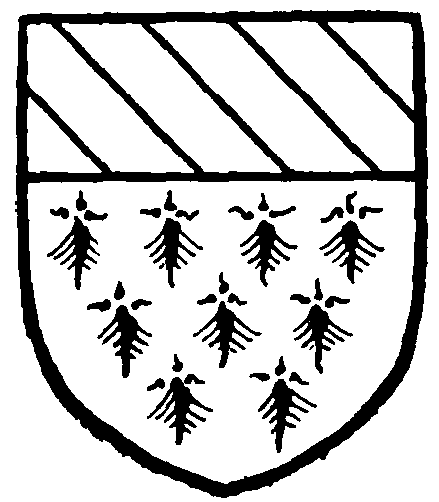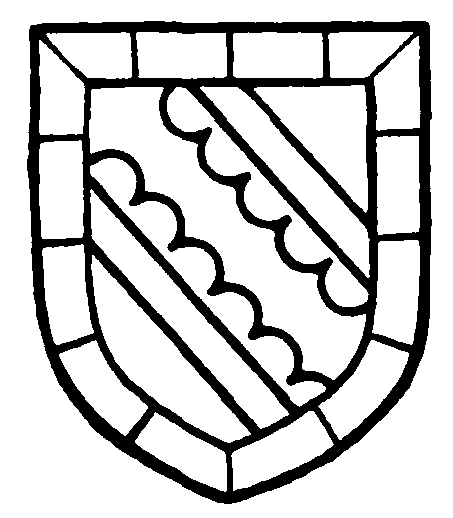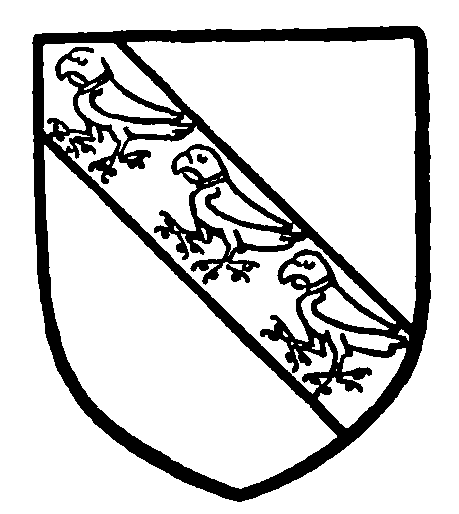A History of the County of Warwick: Volume 3, Barlichway Hundred. Originally published by Victoria County History, London, 1945.
This free content was digitised by double rekeying. All rights reserved.
'Parishes: Weethley', in A History of the County of Warwick: Volume 3, Barlichway Hundred, (London, 1945) pp. 187-188. British History Online https://www.british-history.ac.uk/vch/warks/vol3/pp187-188 [accessed 25 April 2024]
In this section
WEETHLEY
Acreage: 642.
Population: 1911, 21; 1921, 23; 1931, 23.
Weethley is situated at the west end of Ragley Park, 2¼ miles west from Wixford station on the Redditch and Evesham branch of the London, Midland and Scottish Railway, and 3 miles south-west from Alcester, on the borders of Worcestershire. It lies between 200 and 400 ft. above sea-level, its soil and subsoil being clay.
The population is now less than half what it was at the beginning of the 19th century, and inequalities in the soil near the church suggest that there were formerly more houses in this vicinity. A farm-house near the church has 17th-century timber-framed and brick buildings.
Manor
Weethley was said to have been given to the abbey of Evesham by Kenred, King of Mercia, in 708, (fn. 1) but lost in the reign of King Edmund, and regained by Abbot Manny only a few years before the Conquest. (fn. 2) At the time of the Domesday Survey the abbey held 3 hides there. (fn. 3) The Evesham cartulary shows that these were held by the abbot's brother Ralph, (fn. 4) and that later they were divided between two branches of the family; Simon son of Ralph of Coughton and Ralph of Kinwarton each holding 1½ hides. (fn. 5) On the death of Abbot Walter his kinsmen were forced to give up many of the lands they held of the abbey, and it seems probable that Weethley came into the possession of Urse d'Abitot.

D'Abitot. Ermine a chief bendy or and sable.
John d'Abitot held land there in 1257–8, (fn. 6) and in the reign of Edward I Alexander d'Abitot was returned as holding 3 hides in Weethley by doing military service for the abbot, on payment of all his expenses. (fn. 7) At the perambulation of the forest of Feckenham made in 1300 he was described as holding the township and wood of Weethley. (fn. 8) The next holder of the manor appears to have been Malcolm Musard, from whom the abbey regained possession during the abbacy of William de Chiriton (1317–44). (fn. 9) This was disputed by his son John, who, with Simon and Walter Musard and an armed band, entered Weethley, killed three of the abbot's servants, stole over 300 sheep, 40 pigs, horses, cows, and oxen, and maintained themselves there for several weeks. At least five commissions were appointed in 1344 to discover the truth of the raid, but the result is not known. (fn. 10) In 1349, however, John Musard remitted all his claims to the abbot. (fn. 11) In Sept. 1392 the abbey received a further grant of lands in Weethley from one Thomas Patty. (fn. 12)
On the dissolution of the abbey, the king granted the manor of Weethley, then worth £7 2s. 8d., (fn. 13) to Dame Maud Lane, (fn. 14) who sold it in Nov. 1543 to Nicholas Fortescue of Cookhill, Worcs. (fn. 15) He died in 1549 and the next year his widow Katherine was granted custody of 'the site of the late monastery of Weethley and of the manor', together with the wardship of her young son William. (fn. 16) He was succeeded in 1605 by his son Nicholas, an ardent Roman Catholic, who died in 1633. (fn. 17) His son William was also a Roman Catholic and royalist, and before his death, in 1649, his estates had been sequestered. The manor of Weethley was found to be charged with debts far beyond its value. Three people claimed annuities from it and two others held mortgages on lands within it, while a creditor of John Fortescue claimed £50 from the estate. (fn. 18) In 1661 the manor was the subject of a lawsuit between John Fortescue, who had been disinherited by his father because he would not follow the Catholic faith, and his younger brother Francis. (fn. 19) Several more lawsuits followed, (fn. 20) until Weethley was ultimately sold by Nicholas Fortescue to Humphrey Jennens in 1695. (fn. 21) Charles son of Charles Jennens held half the manor in 1765. (fn. 22) It passed to his sister and heir Elizabeth wife of Assheton Curzon, later Baron Curzon of Penn, whose grandson the Hon. Richard Curzon held it in 1820. (fn. 23) His son Earl Howe held the manor in 1872, but by 1877 it had come into the possession of the Marquess of Hertford, (fn. 24) and is now held by the 8th Marquess.

Fortescue. Azure a bend engrailed argent plain cotised or with a border gobony argent and azure.

Curzon. Argent a bend sable with three popingays or thereon.
Church
The church of ST. JAMES was built in 1857–8 of lias stone in the 13thcentury style and consists of an apsidal chancel, nave with bell-turret, north porch, and south vestry. It replaced an ancient building, restored in 1839, (fn. 25) which was no doubt that described c. 1640: 'The chappell is buylded all of tymber, being halftymbered both the chancell and the church. It standeth on a pretty high hill; southwards and westwards it hath a great discent and a very fyne prospect. There is both buriall and christning here. . . . There are no armes nor monuments.' (fn. 26)
The register of burials begins 1572, baptisms 1613, and marriages in 1605. (fn. 27)
Advowson
The chapel of Weethley, which was attached to the church of Kinwarton, (q.v.) was held by Ralph of Kinwarton, and given by him to the abbey of Evesham towards the close of the 12th century. (fn. 28) In 1413 an agreement was made by which the inhabitants were to provide a clerk to officiate in the chapel, to whom the rector of Kinwarton should pay 26s. 8d. yearly. (fn. 29) In 1730 the curate's salary was about £20. (fn. 30) The living is now annexed to the rectory of Arrow, and is in the gift of the Marquess of Hertford.
